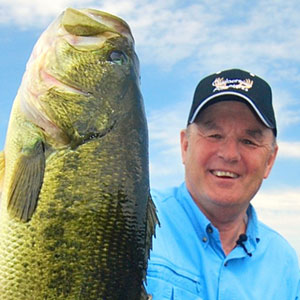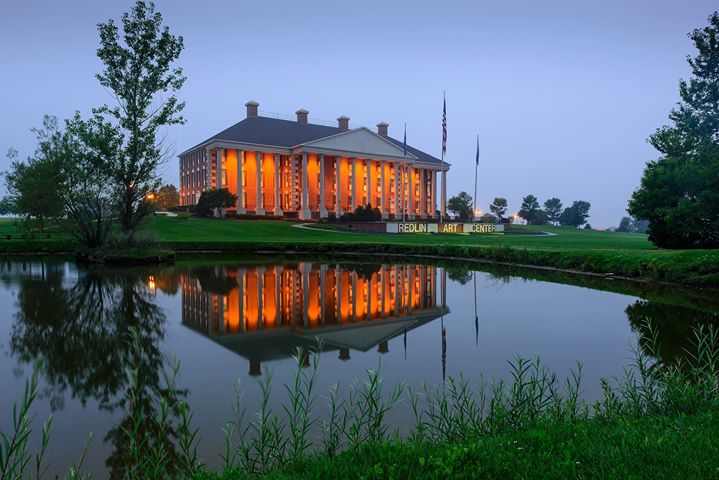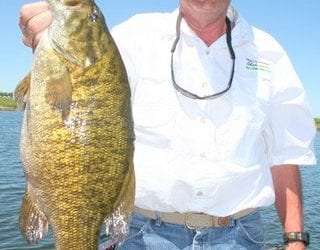Team Outdoorsmen Productions member Larry Myhre holding a channel catfish caught early in the year using cutbait. (Gary Howey Photo)
In the upper Midwest, we’re blessed with an abundance of fishable waters containing numerous species of fish.
As they’re cold blooded, their metabolism speeds up with the rise in water temperatures as does the fishing pressure.
In Nebraska and South Dakota you’ll find one hundred species of fish, those that most anglers are after include: bluegill, crappie, and yellow perch, catfish, the blue, channels as well as flatheads, bass, both largemouth and the smallmouth, northerns, sauger, walleye, trout, paddlefish and salmon in South Dakota’s Lake Oahe.
Preferred Water Temperatures
Each species is different when it comes to the water temperatures, when they become active and when they spawn.
I’m not a fisheries biologist, but with what I’ve read and been told by those that know that the water temperatures where these fish are active vary, not a whole lot, with a slight variation in spawning temperature the farther north you go.
Our cold water species, the trout are more active in water temps from 50 to 65 degrees, while walleyes and sauger prefer 53 to 72 degrees.
Trout can be caught on various lures, with spinners such as the Mepps and Rooster Tails working well as well as the numerous flies that fly fisherman.
For yellow perch it’s from 55 to 72, with live bait, worms, wax worms as well as small spinners and crankbaits working well when fishing for perch.
Northern pike are most active in 55 to 75 degree water, with pike it’s best to use a larger bait, in the spring smelt rigs account for many of the larger fish taken as do jigs, spoons, spinnerbaits and crankbaits used with leaders get the northerns attention throughout the year
As a kid our favorite bait used on the Sioux River in Watertown was the Daredevil, with red and white doing the best job until the sharp toothed pike gnawed all the paint off the spoon.
Smallmouth bass are most active in water temps of 58 to 71, with tube jigs, swimbaits, livebait rigs and crankbaits being some of the most popular baits.
Their cousin the largemouth likes it a little warmer at 68 to 72 degrees, with just about anything that will fit in their mouth working as bait. Baits that work well for northerns include the Northland Bionic Bucktail and Reed Runner spinnerbaits, Its Buzzard Buzzer buzzbaits also brings them up, as well as crankbaits, plastic worms and the jig & pig are but a few of the baits use for this bass.
When it comes to panfish, the bluegill are most active as water temps near 70 to 75 degrees, with small jigs, spinners, slip bobber rigs , livebait rigs and plastics being some the best baits for this panfish.
Crappies get going between 61 and 67 degrees and fooled using slip bobber rigs with minnow’s, small spinners, plastic grubs and a variety of other baits.
Many of these fish are still active under the ice and with some patience and the right bait can be caught under hard ice conditions.
The Spawn
Among the many panfish species, yellow perch are the first to spawn, spawning shortly after ice-out when water temps reach around 44 degrees, they deposit their eggs on the submerged vegetation, brush as well as gravel bottom.
Studies have shown like most species of fish that crappies spawn in late spring or early summer when water temperatures reach around 62 to 67 degrees; this is when males establish their territories, building their nests that are located near vegetation.
Bluegills spawn as water temps hit 70 to 75 degrees they too establish a territory, construct their nest by fanning their tail and guard the eggs and young.
Channel catfish also use nests which can be an undercut bank or beneath tree roots, the males set up the nest, waiting for a female to drop her eggs. They spawn when water temperature rises above 75 to 80 degrees, the male, like other species of fish; guards their eggs and fry.
Their cousin the blue catfish spawns at 70 to 84 degrees with the flathead cat spawning from 66 to 75 degrees.
Smallmouth bass are also nest builders, spawning when water temps are from 62 to 64 degrees, the males if possible, will use the same area each year to spawn, they build their nests in water ranging from 2 to 20 feet deep, using their tail, they fan out a nest that can be as small as 2 feet on up to 6 feet in diameter, once the eggs are fertilized and the young hatch, the male will guard and defend the fry.
Females can have up to 16,000 eggs; where she may deposit eggs in several different nests.
When water temps hit 60 degrees, the territorial and very aggressive male largemouth bass prepares its nest, in the warm water along the shoreline, it too uses its tail to fan out a 2 to 3 foot diameter circle and as water temperature go to 62 to 65 degrees the spawn occurs.
As with the smallmouth bass, female largemouth may have up to 64,000 eggs, depositing them in several nests.
The male may spend several weeks on the nest and it’s said that before he leaves the nest will attack and gobble up a bunch of the fry, its Mother Nature’s way of letting them know they’re on their own.
Studies have indicated that among the bass, only about 25% of the males will build nests and these are generally your larger fish, and it’s not unusual for up to 50% of those nest to fail.
Sauger and walleye spawn in the gravel beds along the shoreline, with the sauger spawn happening at 39-43 degrees while the walleye spawn occurs as temps reach 40-45 degrees.
Northern pike move into the shallow, spawning in the vegetation along lakeshores and streams as the water temperature reach around the 48 degree mark. Spawn in the afternoon, the pike scatter their eggs and then depart, with the eggs hatching on their own.
As with anything, depending on what state you’re in, the time fish become active and when they spawn will vary, with the above information is an average.
With water temps rising, it won’t be long before fishing picks up as will the number of anglers and boats on the water.
Just yesterday, good friend Larry Starman and I decided to see if the catfish were biting down river, the water temps were right at 46 degrees and we caught some nice fish, but the cats weren’t very active.
But when I get an opportunity to go fishing, no matter what the temperature, I’m gone.
Enjoy the warmer weather on the way and the great number of fish that we can go after in the upper Midwest.
Gary Howey, Hartington, Neb. a former tournament angler, fishing & hunting guide and an award winning writer, producer and broadcaster, who was in 2017 inducted into the “National Freshwater Fishing Hall of Fame”. He developed and was the Producer- Host of the Outdoorsmen Adventures television series for 23 years, with the new Outdoorsmen Adventures television series thirteen week season begins Saturday April 4 at 11:00 am on KCAU-TV, Sioux City as well as throughout the upper Midwest. Howey is also the Co-Host of the award winning Outdoor Adventures radio show heard each morning at 6:45 am throughout South Dakota, Nebraska and Iowa, looking for more outdoor information, check out garyhoweysoutdoors.com, outdoorsmenadventures.com and like Gary Howey’s Facebook pages and watch the new Outdoorsmen Adventures television season beginning April 4th on KCAU-TV, Saturdays at 11:00 am, Hartelco, News Channel Nebraska on the Outdoor Channels www.MyOutdoorTV.com





0 Comments